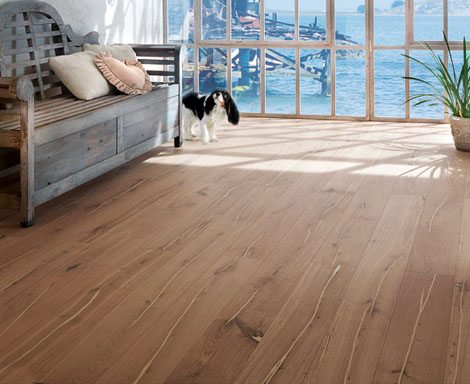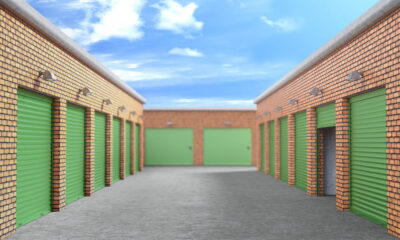

Energy
7 More Sustainable Flooring Alternatives
If you’re building or renovating a home and you think about flooring options, you probably turn automatically to carpet and hardwood. At first glance, both are certainly attractive options, but when you consider their negative effect on the environment, they can lose a lot of their appeal.
The negative environmental effects of traditional flooring options can be significant. Hardwood floors eat up trees, studies show that vinyl options carry toxic chemicals, and the carpet industry is poisonous and releases substantial amounts of waste into the environment.
By contrast, it’s amazing what an alternative flooring option can do for both your indoor air quality and the environment. Here are a few of the most popular and attractive substitutes.
1. Concrete
Because it’s made from all-natural materials that are easily returned to the environment, concrete easily makes the grade as a sustainable material. Concrete flooring yields a high-end, modern look for any room.
But if you’re not a big fan of gray floors, you can get stamped concrete, which will simulate the look of hardwood without the environmentally harmful effects. It’s extremely durable, stain resistant, easy to clean, and will probably never need to be replaced.
2. Cork
This is a relatively new option for flooring, but it’s growing in popularity. It’s particularly good for this purpose because it’s a softer wood that offers more give when you walk on it, and it looks beautiful. Cork is harvested from the bark of cork oak trees, but the tree is not cut down in the process. The bark grows back in just three years’ time, which makes it an ideal renewable resource to use for building construction.
3. Bamboo
A similarly swiftly renewable resource, bamboo is another wood-like flooring option that’s gaining steam. In the plant world, bamboo is actually classified as part of the grass family, but its hardwood qualities make it perfect for flooring.
Bamboo doesn’t look much different from natural hardwood when installed, and it can grow from seed to maturity in just three years.
Chances are, you think of linoleum as part of the toxic vinyl family, but in reality, they’re not related at all. Linoleum is actually made from all-natural, easily renewable materials. It’s also flame retardant and water resistant, so it’s perfect for your kitchen floor.
5. Glass Tile
Glass tiles are almost always made from recycled glass, which means no new resources were removed from the environment when they were made. Glass is a beautiful option that’s also flame retardant, stain resistant, and waterproof. It also reflects natural light, thus brightening a dark room.
6. Wool Carpet
If you like the idea of carpet, but don’t want to pollute the environment, think about wool. This type of carpet is made from an entirely natural resource that doesn’t harm any animals in the making. It’s also soft and durable and can withstand the activities of the most stressful houseguests.
7. Recycled Carpet
This carpet is made from plastic bottles, nylon, wool, and/or cotton, all of which have been recycled. When combined, it creates a soft, non-toxic finish for any room without adding excess pollutants and waste to the environment. It gives millions of plastic bottles and other decomposition-resistant materials a better place to end up than a landfill or the ocean.


 Environment10 months ago
Environment10 months agoAre Polymer Banknotes: an Eco-Friendly Trend or a Groundswell?

 Environment11 months ago
Environment11 months agoEco-Friendly Home Improvements: Top 7 Upgrades for 2025

 Features9 months ago
Features9 months agoEco-Friendly Cryptocurrencies: Sustainable Investment Choices

 Features10 months ago
Features10 months agoEco-Friendly Crypto Traders Must Find the Right Exchange





























